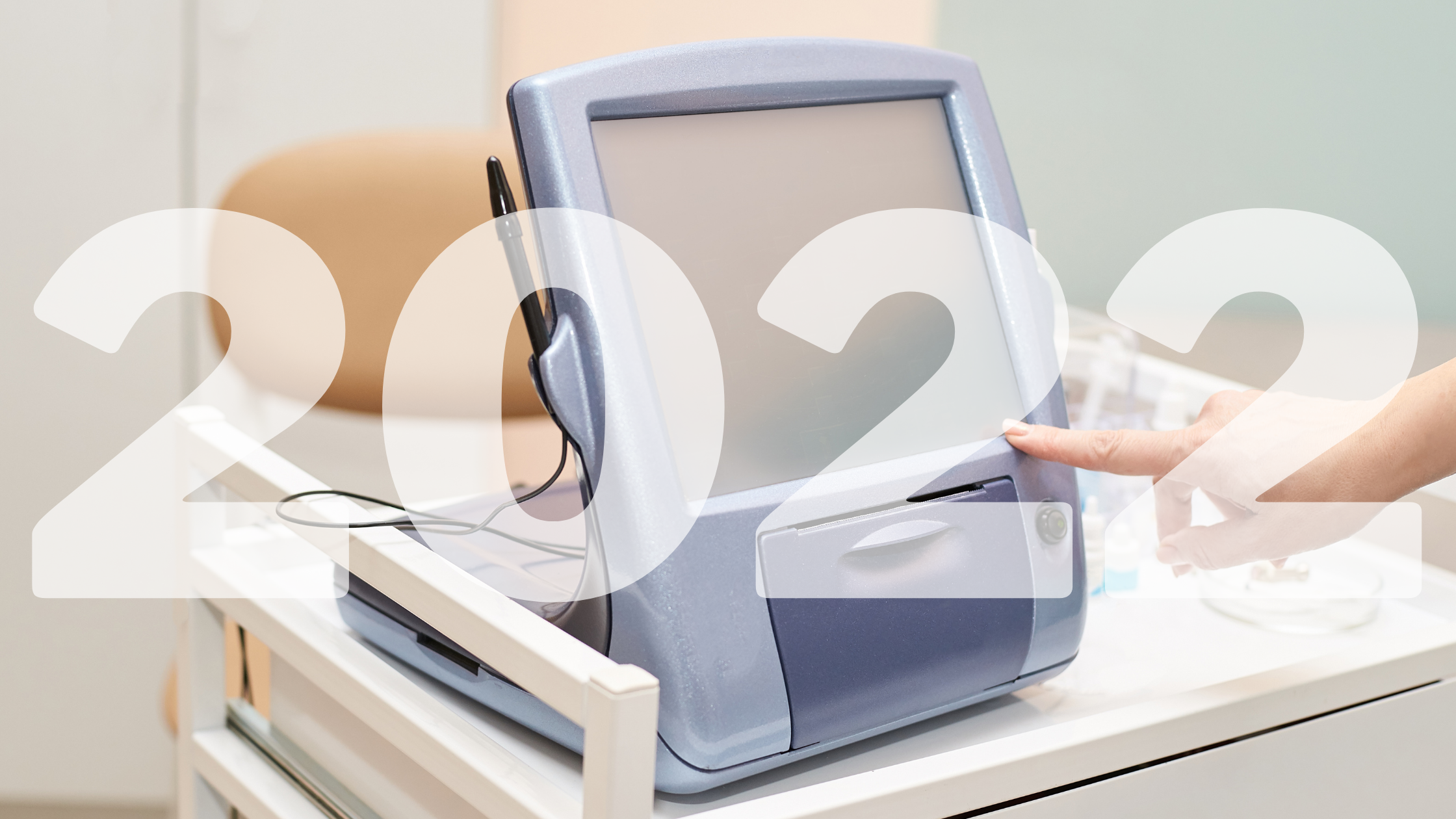The Top 4 Medical Device Trends to Watch for in 2022

As we start fresh on a new calendar once again, it’s only natural to want to look ahead to see what the new year has in store. Particularly in the wake of the COVID-19 pandemic, it’s more important than ever to keep your finger on the pulse, as it could be the difference between life and death for your medical device business—and the patients that rely on it.
So, what can healthcare and life science equipment designers, manufacturers, and end-users look forward to? Here are the top four medical device trends to keep an eye on in 2022.
1. GLOBAL SUPPLY CHAIN ISSUES WILL CONTINUE TO HINDER MEDICAL DEVICE PRODUCTION
If you thought you’d heard the end of supply chain setbacks after the 2021 holiday season—you’re dead wrong. In fact, many experts predict we will be living with these shipping backlogs until at least the second half of 2022. Not only that, but a global semiconductor chip shortage means that products across the board—from Priuses and PlayStation 5s to electric toothbrushes and, yes, medical devices—will be adversely affected.
For many medical device manufacturers, this is more than a mere disruption. While some companies are taking a huge financial hit, others are far worse off. That’s not to mention the patients who may not have the life-saving medical devices they need—when they need them most.
To combat this, OEMs will need to be proactive in everything they do. This includes planning around longer-than-expected lead times, finding and implementing suitable replacement parts/materials, and going back to the drawing board to redesign medical devices in a way that will help avoid these narrow supply chain bottlenecks. If you’re looking for more specific suggestions on how to work around the current supply chain shortage, this article from IPS provides some great product design tips.
2. THE DEMAND FOR DIAGNOSTIC DEVICES WILL FURTHER ACCELERATE THE TRADITIONAL PRODUCT DEVELOPMENT PROCESS
During the last 24 months, the market desire for quick and accurate diagnostic testing has reached an all-time high. Life science companies in charge of manufacturing these point-of-care (POC) diagnostic tests will need to develop quickly if they want to keep up and get test results in the hands of patients and clinicians—and do it faster than ever before.
Since we know it can be done, it’s only a matter of how to do it. In order to increase production and significantly slash the typical timeline required, medical OEMs will need to reevaluate their entire product development process from the ground up. This may include identifying more efficient designs, investing in automation, finding ways to expedite development wait times (such as test results and government approvals), and leaning on outside partners to help with the things they can’t—or don’t have the time to—do in-house.
3. CYBERSECURITY CONCERNS WILL TAKE CENTER STAGE AS MORE MEDICAL DEVICES INTEGRATE AI AND OTHER ADVANCED TECHNOLOGY

To simply say that technology in the medical device world will continue to advance in 2022 would be more of a guarantee than a prediction. A recent report by Grand View Research makes this even more apparent, as they forecast the market valuation of artificial intelligence (AI) in healthcare to grow from $10.4 billion in 2021 to over $120 billion by 2028.
Of course, with the emergence of advanced AI, machine learning, and the internet of things (IoT) comes the increased concern of cybersecurity. When it comes to medical devices, there are two main issues to consider. The first is on the product development and manufacturing side, as manufacturers need to constantly control and protect patient information. Then there’s the problem of protecting millions of internet-connected devices out in the market from a myriad of ever-evolving cyber threats.
Even if you don’t have any current plans to integrate AI into your medical devices, this is one trend that you should absolutely not ignore. When it comes to this type of technology, it’s more of a matter of when—not if—you’ll jump in. When that time comes, you’ll want to be fully prepared for success (or have a trusted partner who is) because the rules and regulations in this digital landscape are constantly changing.
4. ELECTIVE PROCEDURES WILL RETURN—ALONG WITH THE NEED FOR THEIR PROCEDURE-SPECIFIC EQUIPMENT
In the past 24 months, many nonessential procedures were put on hold. While 2021 saw a slight uptick in elective procedures, many patients were still reluctant to put themselves at unnecessary risk. Now, in 2022, people are finally confident enough to start scheduling these elective procedures they’ve been putting off for years, which is music to the ears of medical device manufacturers.
With nearly two years of collecting dust, many of these elective procedure devices are either out-of-date or in dire need of replacement. Whether it’s a robotic part for minimally invasive surgery or a wearable medical alert device for elderly patients returning home from a hip or knee replacement, OEMs will need to figure out a way to quickly scale up production to meet the returning demand.
IS YOUR COMPANY PREPARED FOR THESE MEDICAL DEVICE TRENDS?
The future may be full of challenges, but it’s also rife with opportunities, so long as you’re prepared to take them. Regardless of which trend is most important to you, the difference between a company that gets blindsided by these changes and one that thrives in them is having an experienced partner like Kablooe on your side.
Kablooe Design is a full-service product development company that specializes in developing new products for the medical device and consumer markets. Our unique staffing approach and D3 Process set us apart as a product development partner and give you peace of mind knowing that your product will be designed with all stakeholders in mind.
Whether you need help with feasibility modeling, industrial design, or human factors engineering, we have the resources and experience necessary to make your project a life-changing reality. Contact us today to get started.
